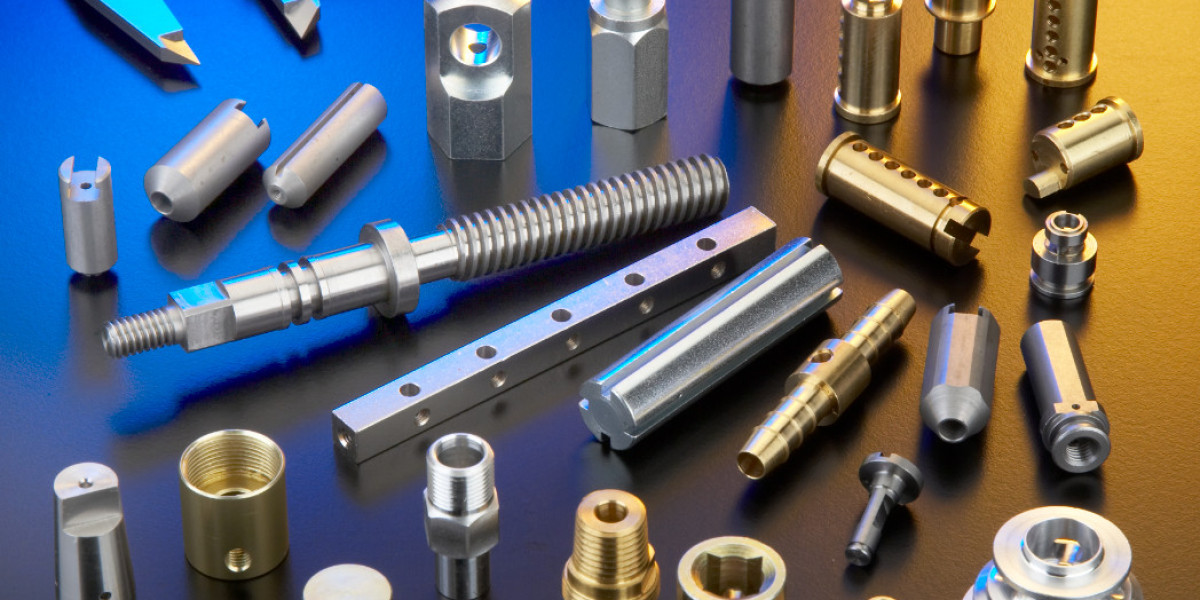turned parts are precision components produced through the turning process, a fundamental machining technique used in various industries. This article delves into the characteristics, manufacturing process, types of materials, applications, and benefits of turned parts.
What Are Turned Parts?
Turned parts are components created by rotating a workpiece on a lathe while a cutting tool removes material to shape the part. This process allows for the creation of parts with precise dimensions and complex geometries. Turned parts can be made from a wide range of materials, including metals, plastics, and composites.
Characteristics of Turned Parts
Precision: Turning allows for high precision in manufacturing, achieving tight tolerances and complex shapes.
Surface Finish: The process can produce a smooth surface finish, which is important for both aesthetic and functional purposes.
Versatility: Turned parts can be made from various materials, including metals, plastics, and composites, offering flexibility in design and application.
Consistency: The turning process ensures uniformity and consistency in production, making it suitable for high-volume manufacturing.
Manufacturing Process
The turning process involves several key steps:
Material Selection: Choose the appropriate material based on the application requirements. Common materials include metals (e.g., steel, aluminum, brass), plastics, and composites.
Setup: The material, often in the form of a rod or bar, is secured on a lathe. The lathe rotates the workpiece while a cutting tool removes material to shape it.
Turning: The cutting tool is fed into the rotating workpiece, shaping it according to the design specifications. This can involve various turning operations such as facing, tapering, and threading.
Finishing: After turning, additional processes such as sanding, polishing, or coating may be applied to achieve the final surface quality and dimensional accuracy.
Inspection: The finished parts are inspected to ensure they meet the required tolerances and quality standards.
Types of Materials for Turned Parts
Metals:
- Steel: Known for its strength and durability, used in automotive and industrial applications.
- Aluminum: Lightweight and corrosion-resistant, suitable for aerospace and automotive parts.
- Brass: Offers good machinability and corrosion resistance, used in fittings and decorative parts.
- Stainless Steel: Provides high corrosion resistance and strength, used in medical and aerospace applications.
Plastics:
- Acrylic: Clear and strong, used in optical and display applications.
- Nylon: Known for its mechanical strength and wear resistance, used in gears and bearings.
- PTFE (Teflon): Offers low friction and chemical resistance, used in seals and gaskets.
Composites: Materials such as carbon fiber composites that provide high strength and low weight, used in high-performance applications.
Applications of Turned Parts
Turned parts are used in a variety of industries and applications, including:
- Automotive: Components like shafts, gears, and fittings that require precision and durability.
- Aerospace: Parts such as brackets, bushings, and fasteners that must withstand extreme conditions.
- Medical: Surgical instruments, implants, and diagnostic equipment where precision and cleanliness are essential.
- Industrial Equipment: Components like bearings, valves, and housings that need to perform reliably under stress.
- Consumer Goods: Parts for electronics, appliances, and toys that require both functionality and aesthetic appeal.
Benefits of Turned Parts
High Precision: Turning provides exceptional precision, ensuring parts meet exact specifications and tolerances.
Versatility: The ability to work with various materials and create complex shapes makes turning a versatile manufacturing method.
Consistency: The process ensures uniformity across multiple parts, which is crucial for high-volume production.
Surface Quality: Turning can achieve a smooth surface finish, reducing the need for additional finishing processes.
Cost-Effectiveness: For many applications, turning can be a cost-effective solution, particularly for high-volume production.
Challenges and Considerations
Material Limitations: Some materials, such as certain composites or very hard metals, can be challenging to machine and may require specialized tooling.
Tool Wear: Cutting tools can wear out over time, affecting precision and requiring maintenance or replacement.
Waste: The turning process can produce material waste, which may need to be managed or recycled.
Conclusion
Turned parts are essential components across various industries, offering precision, versatility, and consistency. By understanding the characteristics, manufacturing process, and benefits of turned parts, you can make informed decisions and ensure high-quality results for your projects.
